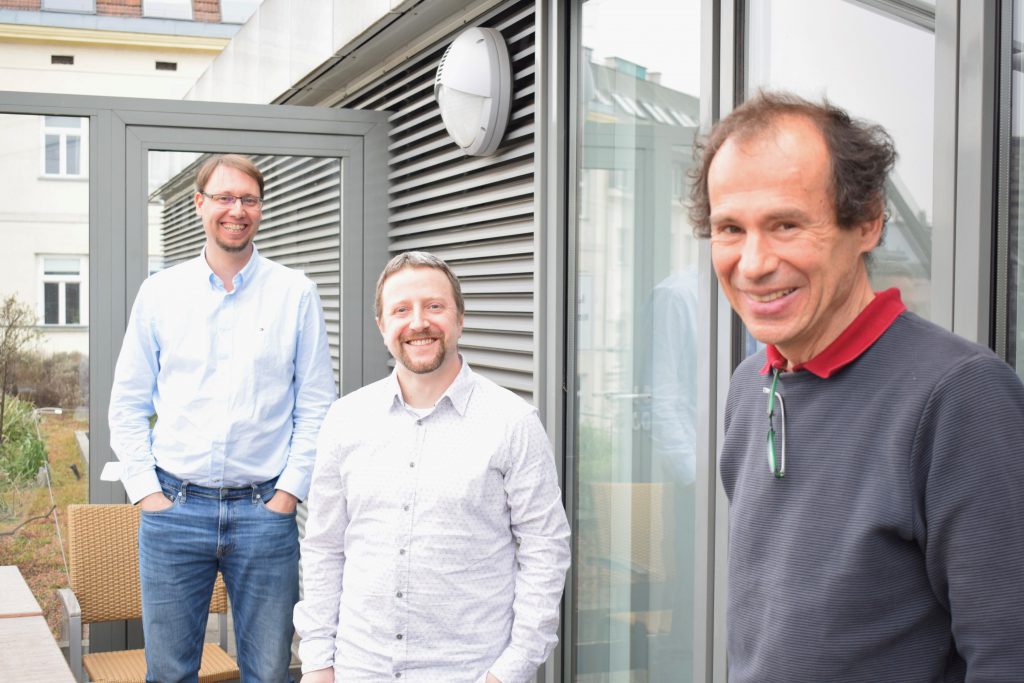Alex’s Lemonade Stand Foundation Crazy 8 Initiative Award goes to Vienna: Tracking the tumor origin to cure childhood cancer

(Vienna, 16.03.2021) The project “Tracking the origin of Ewing sarcoma (…)” coordinated by St. Anna Children’s Cancer Research Institute, has been selected for the prestigious Crazy 8 Initiative Award. With this funding, Viennese scientists aim to elucidate the still unsolved mystery of the origin and development process of pediatric bone sarcomas. This knowledge is fundamental to lay a path for new and more effective therapies to cure childhood cancer.
A team of researchers led by Prof. Heinrich Kovar, PhD, has received the highly endowed Crazy 8 Initiative award from Alex’s Lemonade Stand Foundation (ALSF), a leading funder of pediatric cancer research, for their research project “Tracking Ewing sarcoma origin by developmental and trans-species genomics”. Through a rigorous review process, ALSF received over 100 letters of intent from researchers that resulted in 83 full grant applications which were ultimately narrowed down to four projects. One of them is now starting in Vienna.
Together with researchers from St. Anna Children’s Cancer Research Institute (St. Anna CCRI), the Medical University of Vienna and the University of Natural Resources and Applied Life Sciences, Vienna, Prof. Kovar strives to answer a tricky question that has occupied scientists for generations: What is the origin of bone sarcomas and how do they form?
Ewing sarcoma is a very aggressive bone tumor in children and adolescents, and associated with poor long-term-survival in about one third of the patients. The need for novel treatment options to improve the outcome is high, but the clinical development of innovative new medicines is severely hampered by low incidence rates and lack of pre-clinical models.
Challenging like crazy, but critically needed
Despite intensive research throughout the last decades, the tissue origin of Ewing sarcoma as well as the timing of its genetic onset remains unknown. This fact prevents the development of suitable disease models to test drug mechanisms and efficacy, resulting in a lack of innovative therapies. “Now, we break new ground to decipher the secret of this disease”, says Prof. Kovar. “The overall goal of this project is to develop an appropriate pre-clinical tumor model recapitulating the human disease. This would allow for high-throughput pre-clinical drug screenings.”
“To decipher the tissue and differentiation state of origin for Ewing sarcoma, we will follow two complementary approaches”, announces Prof. Kovar.
Exploring human epigenetic memory in fish
Led by St. Anna CCRI’s Martin Distel, PhD, the first approach takes advantage of the cell’s epigenetic memory, “remembering” its tissue of origin, to find the cells in zebrafish larvae analogous to the cells of bone sarcoma origin in humans. Prof. Kovar explains, “Gene expression is widely regulated by epigenetics. From the cell’s epigenetic memory, we utilize several gene-regulating elements, which are typically active in human Ewing sarcoma and which are most likely activated in the cell of cancer origin. We use these elements to regulate fluorescent reporter genes in zebrafish larvae, coding for fluorescent proteins.” As soon as the sarcoma specific regulating elements are activated in specific cells of the zebrafish larvae, these cells light up.
“We closely watch this process throughout the whole fish development and ask the following questions: When do cells start to light up? In which tissue? And for how long?”, explains Dr. Distel.
Subsequently, the researchers isolate the fluorescent cells to determine their identity. They then express the disease-driving oncogene in the identified cell type, which is supposed to result in tumor formation in the fish.
Until now, it has not been possible to grow human-like Ewing sarcoma in an animal model. If the researchers succeed, this would be a huge step forward in the investigation of bone sarcoma in children.
Create a gene expression atlas to map cancer on healthy tissue
The second approach, co-led by Florian Halbritter, PhD, focusses on mesenchymal and neural crest stem cells, which were proposed as candidate cell types of Ewing sarcoma origin. “By using single-cell transcriptome and epigenome analyses, we will create an exact reference map of human stem cell development. We will differentiate these stem cells into cartilage, bone, fat or nerve cells. At different time points of stem cell differentiation, we will then activate a cancer-inducing oncogene and dynamically monitor sarcoma-like transformation.”
“We want to know: how do these cells differentiate with and without the oncogene?”, says Dr. Halbritter. This knowledge will be summarized in a differentiation atlas of healthy versus cancer development. The hereby-created map will be compared with data from human tumors, to see which cell types and differentiation states best match with the tumors.
“In these independent but complementary approaches, the novel and crucial aspect of our strategy is to not only localize the cell of tumor origin but also to investigate at which developmental stage tumor formation is induced. If successful, we expect our approach to converge on few candidate cell types and differentiation states, which will be used to model the disease”, explains Prof. Kovar.
When taking a high risk, the right team is crucial for success
This multidisciplinary research project is only possible in close collaboration of St. Anna CCRI’s research groups of Ewing sarcoma expert Prof. Kovar, molecular biotechnologist Martin Distel, and computational biologist Florian Halbritter (all St. Anna CCRI) with developmental biologist Prof. Igor Adameyko, PhD, and genomics expert Matthias Farlik, PhD, (both Medical University of Vienna), and cell engineering expert Prof. Cornelia Kasper, PhD (University of Natural Resources and Life Sciences, Vienna).
The Crazy 8 Initiative, provided by Alex’s Lemonade Stand Foundation, strives to fund “impactful research that is critically needed for children with cancer types that have been historically difficult to cure”. It refers to eight unsolved, burning research questions in childhood cancer, which are most difficult to tackle. “Therefore, we need to take high risk and break new grounds in research”, says Prof. Kovar. “There is a risk of failure, but a chance to change the game in the fight against childhood cancer.”